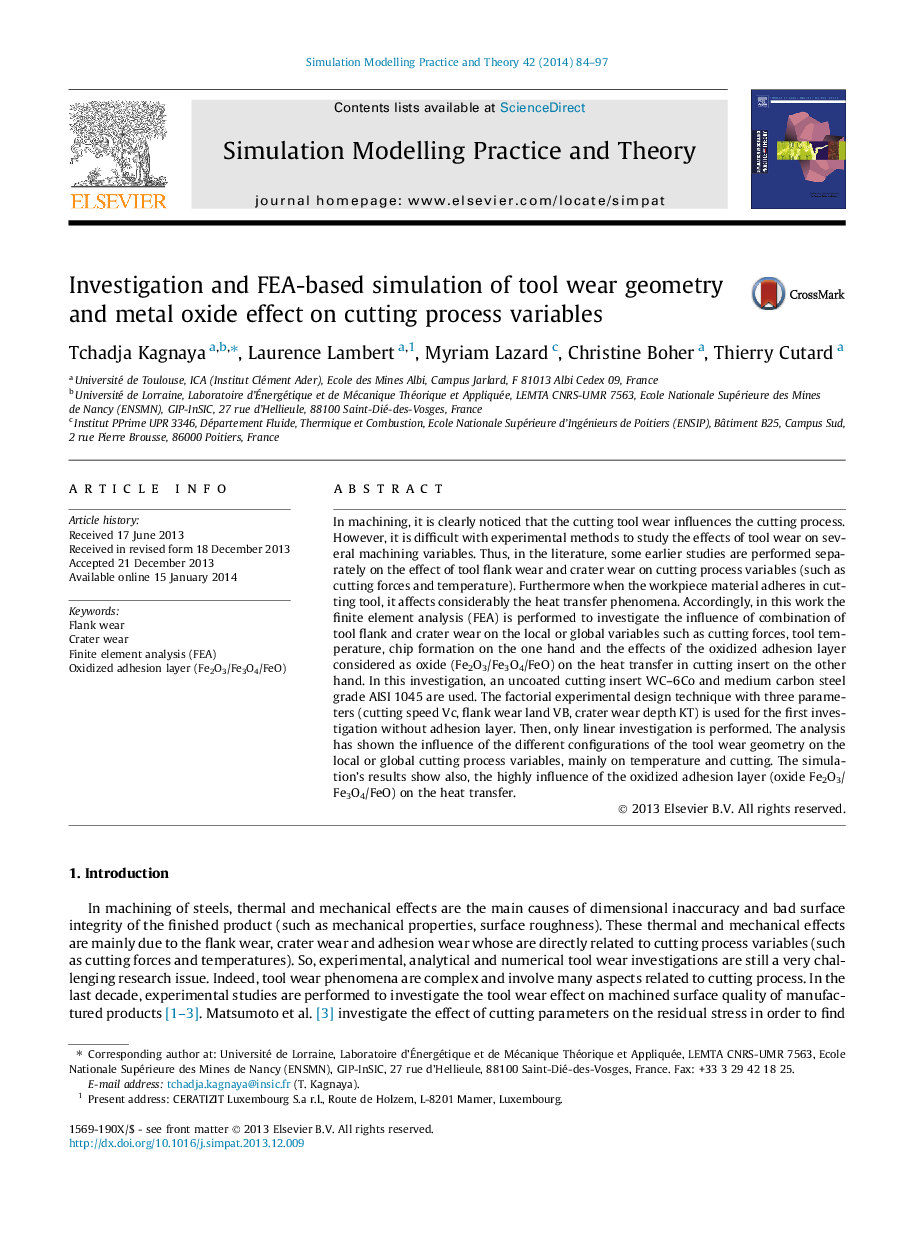| کد مقاله | کد نشریه | سال انتشار | مقاله انگلیسی | نسخه تمام متن |
|---|---|---|---|---|
| 491775 | 720673 | 2014 | 14 صفحه PDF | دانلود رایگان |

• FEA are used to study the effects of tool wear on several machining variables.
• Tool crater and flank wear influence significantly cutting process variables.
• Adhesion layer (Fe2O3/Fe3O4/FeO) affects significantly cutting process variables.
• Fe2O3/Fe3O4/FeO layer promotes decreasing tool flank land temperature.
• Fe2O3/Fe3O4/FeO layer promotes the increase of the workpiece surface temperature.
In machining, it is clearly noticed that the cutting tool wear influences the cutting process. However, it is difficult with experimental methods to study the effects of tool wear on several machining variables. Thus, in the literature, some earlier studies are performed separately on the effect of tool flank wear and crater wear on cutting process variables (such as cutting forces and temperature). Furthermore when the workpiece material adheres in cutting tool, it affects considerably the heat transfer phenomena. Accordingly, in this work the finite element analysis (FEA) is performed to investigate the influence of combination of tool flank and crater wear on the local or global variables such as cutting forces, tool temperature, chip formation on the one hand and the effects of the oxidized adhesion layer considered as oxide (Fe2O3/Fe3O4/FeO) on the heat transfer in cutting insert on the other hand. In this investigation, an uncoated cutting insert WC–6Co and medium carbon steel grade AISI 1045 are used. The factorial experimental design technique with three parameters (cutting speed Vc, flank wear land VB, crater wear depth KT) is used for the first investigation without adhesion layer. Then, only linear investigation is performed. The analysis has shown the influence of the different configurations of the tool wear geometry on the local or global cutting process variables, mainly on temperature and cutting. The simulation’s results show also, the highly influence of the oxidized adhesion layer (oxide Fe2O3/Fe3O4/FeO) on the heat transfer.
Journal: Simulation Modelling Practice and Theory - Volume 42, March 2014, Pages 84–97